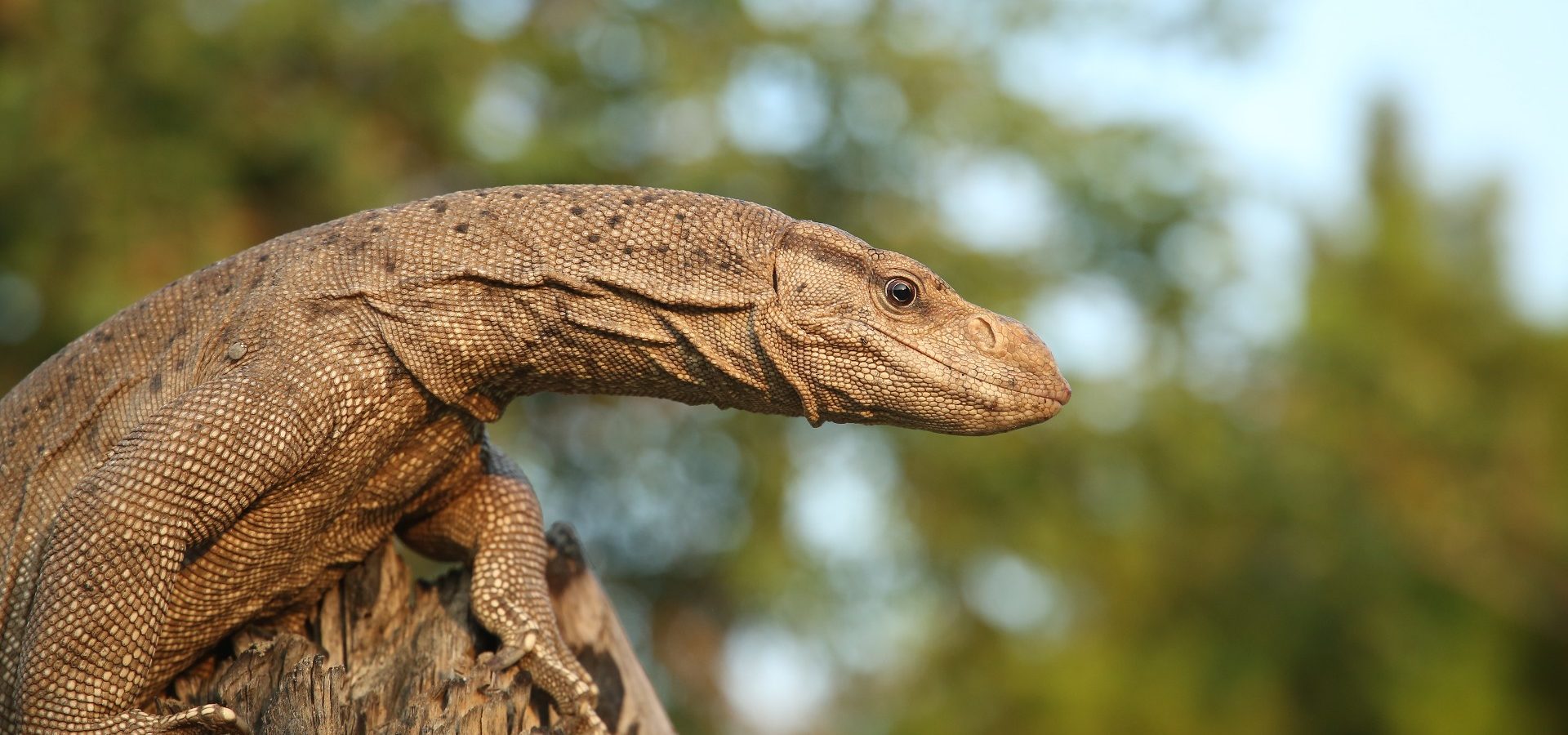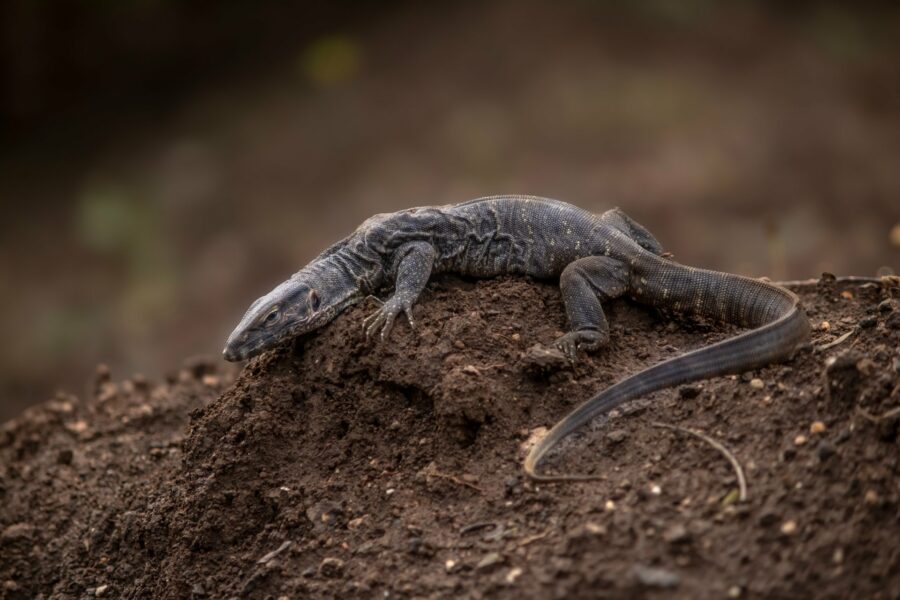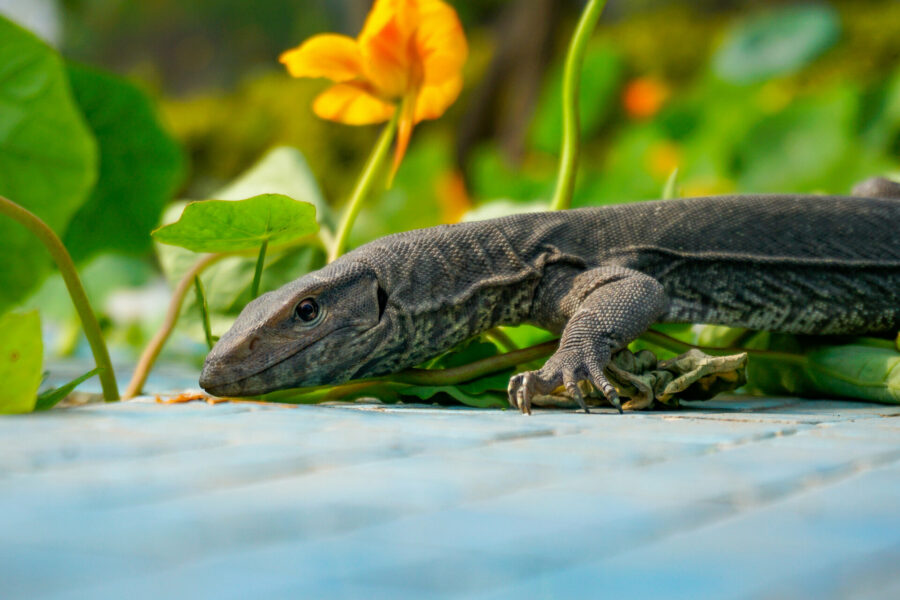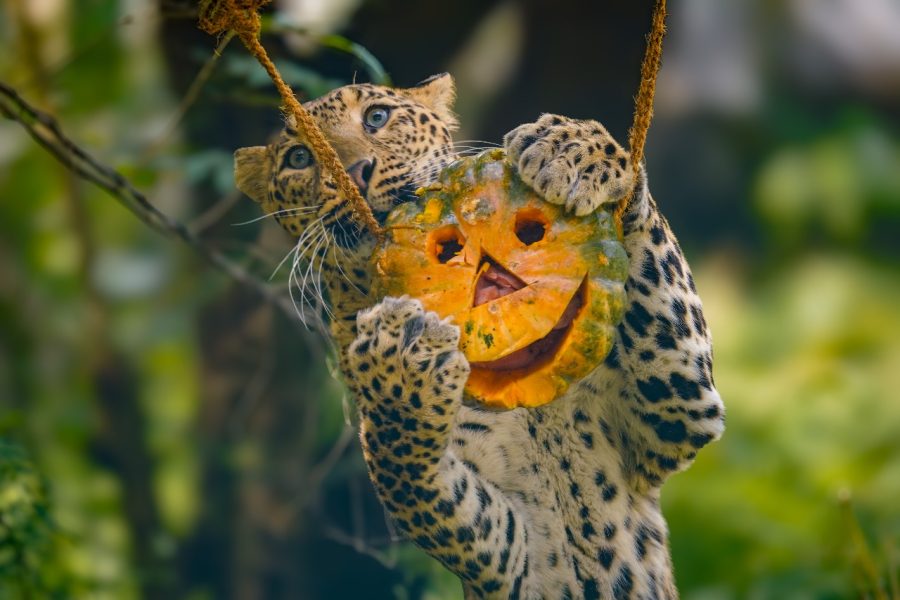Due to their unique morphological features and huge size, Monitor lizards may elicit fear among people. But they are far from harmful. In fact, humans have caused more harm to these reptiles. Various myths and superstitions surrounding Monitor lizards have led them to bear the brunt of issues like human-wildlife conflict and wildlife trafficking.
Wildlife SOS has saved numerous Bengal monitors from people’s homes, factories, residential areas, commercial buildings and public places. Misconceptions about these animals lead people to label them as beasts, belonging to the prehistoric age. It’s true that these lizards’ evolutionary path traces back to antiquity; they existed in the times of the dinosaurs. But it is also important for us to be aware about these magnificent creatures in order to nip the misunderstandings in the bud.
Monitoring Lizards
India is home to four Monitor lizards – the Bengal Monitor (Varanus bengalensis), the Asian Water monitor (Varanus salvator), the Yellow monitor (Varanus flavescens) and the Desert monitor (Varanus griseus). These reptiles are mostly solitary and spend their days on the go, often venturing into urban areas for food and water. They are even known to help regulate rodent and insect populations.

While the Bengal monitor is the most widely distributed of the four, Asian water monitors are the largest, measuring up to 2 metres; the Bengal monitor comes a close second and is known to be approximately 1.75 metres in length. The Bengal monitor can be found in many parts of India – from deserts to wet evergreen patches and even in densely populated urban areas such as Agra and Delhi-NCR.
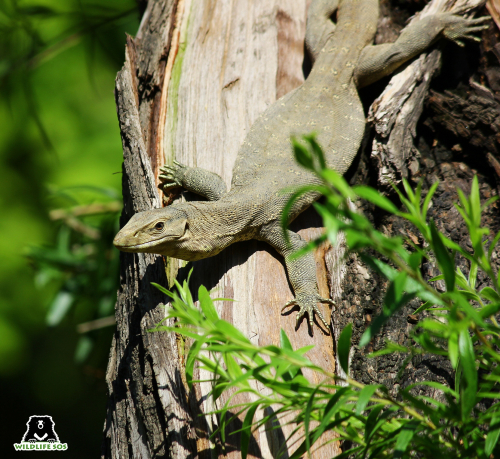
Two subspecies of the Asian monitor can be found in India, namely the Andaman monitor, which dwells only in the Andaman islands, and the Southeast Asian water monitor (Varanus salvator macromaculatus) residing in east and north-east India, and the Nicobar islands.
Meanwhile, three subspecies of the Desert monitor are known to exist – the Grey monitor, the Caspian Monitor, and the Indian Desert monitor. As the name suggests, the Indian Desert monitor is highly habitat specific and found in the Thar Desert region across India’s Rajasthan. It is the smallest of all the monitors found in India (less than a metre in length) and are known to feed on mostly invertebrates, although they can eat smaller lizards and mammals too.
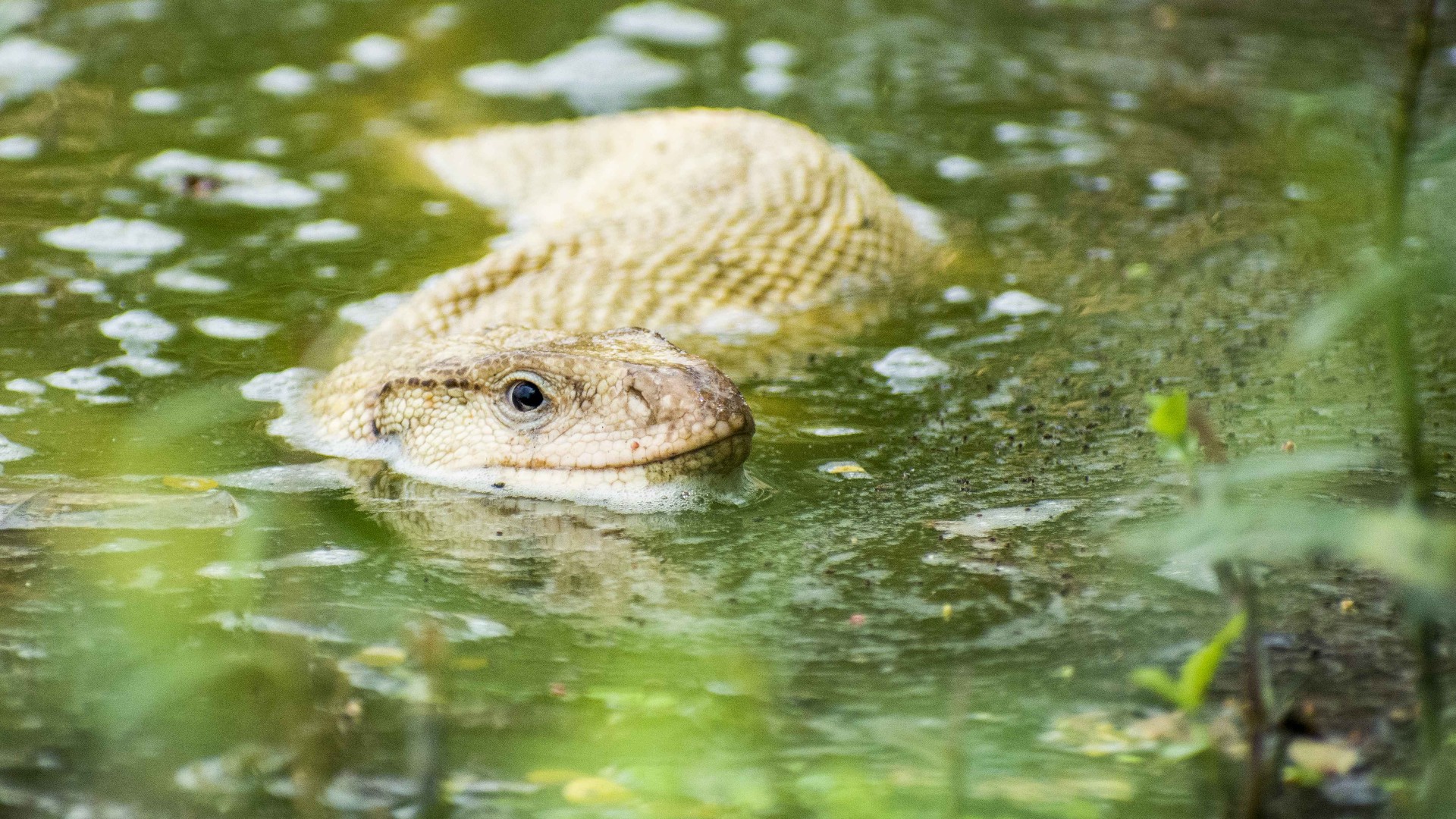
The Yellow monitor is seen in eastern India, majorly in West Bengal. The species is found near wet areas, especially in wetlands such as agricultural fields. Compared to the Bengal monitor, which is adept in climbing trees, the Yellow monitor is incapable of doing so due to its short hind toes. What threatens this species the most is the lack of study, which ultimately results in poor awareness. Frequently seen in human-dominated areas, lack of awareness can often lead to the animal being harmed by human beings.
Monitoring Rescues
Wildlife SOS has worked extensively on saving and conserving Monitor lizards through their rescues, and even treated these reptiles. Ranging from construction sites to markets, shops, water tanks, kitchens and even a car manufacturing unit, the Wildlife SOS Rapid Response Unit has rescued them from several distress situations.
In a rare incident, Wildlife SOS rescued a Monitor lizard from a Honda car manufacturing unit in Noida, Delhi-NCR. The 3-foot-long reptile was found stuck in a fence of the garden inside the factory premises. The team had to be extremely careful while extricating the distressed lizard as they wanted to avoid agitating it further.
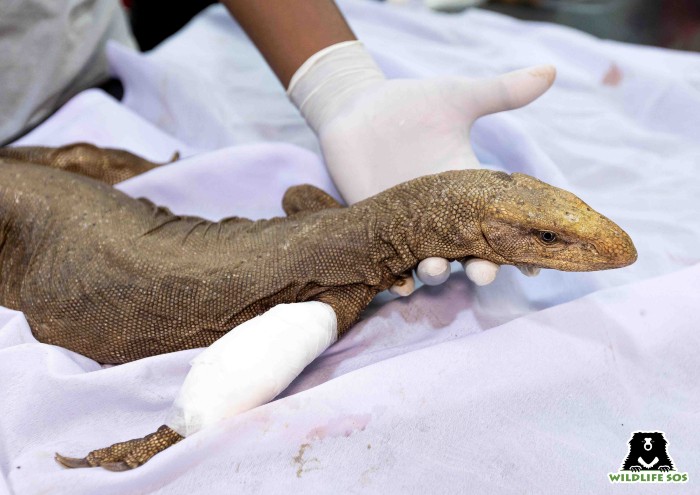
It took them nearly an hour to safely remove the reptile from the fence. The animal had sustained injuries on its right forelimb, following which the Wildlife SOS veterinarians provided topical medication on the wounds.
In another instance, Wildlife SOS rescued a Monitor lizard which had entered a shop in the Delhi Cantonment area. Recently, our team also rescued three monitors in a span of three days. One of them was found inside a residence in Shyam Vihar, New Delhi. As soon as the team reached the location to rescue the lizard, the animal jumped into a water tank. It took the team nearly 30 minutes to safely extricate the reptile.
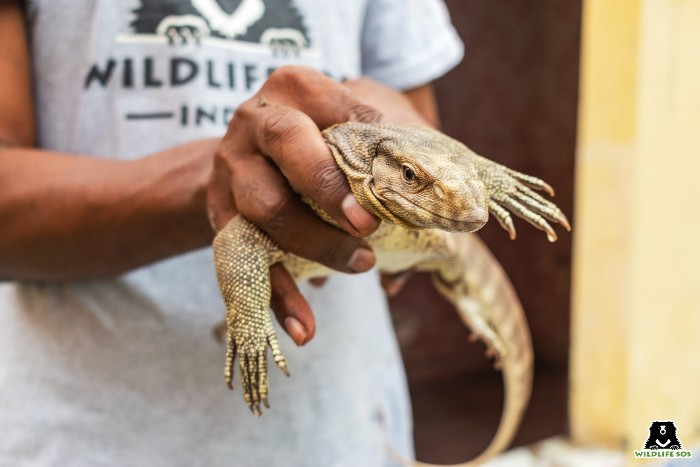
Meanwhile in Agra, the team rescued a Monitor lizard from the kitchen of a house, hiding underneath a mixer grinder. Other rescues included two other Monitor lizards from separate situations – one was extricated from a drain in Radha Nagar and another from a paper bowl manufacturing factory located in Rambagh, Agra.
These rescue instances reflect the increased awareness of the citizens of Delhi-NCR and Agra, and their concern towards reptiles and urban wildlife. The initial reaction to spotting a lizard is usually that of fear, which is why they are met with hostility. But the remarkable transition in people’s attitude is a positive sign of the change Wildlife SOS is trying to bring through its work.
Monitoring Wildlife Trafficking
One of the biggest threats to these reptiles is hunting for their skin. The skins of these lizards are used to make drums and their genitals are considered identifiably similar to the hatha jodi plant. According to superstition, they are said to bring prosperity and are sold widely across south Asia. People also consider their flesh and eggs as a delicacy and an aphrodisiac.
In the month of March this year, Wildlife SOS, in collaboration with the Gujarat Society for Prevention of Cruelty to Animals (GSPCA) conducted a raid in a small, inconspicuous shop in Surat, Gujarat. The team assisted the Surat Forest Department in seizing a total of 6 Monitor lizard genitals in the raid. Again in June, the team seized 7 lizard genitals by busting a large-scale wildlife trafficking racket in Navsari, Gujarat.
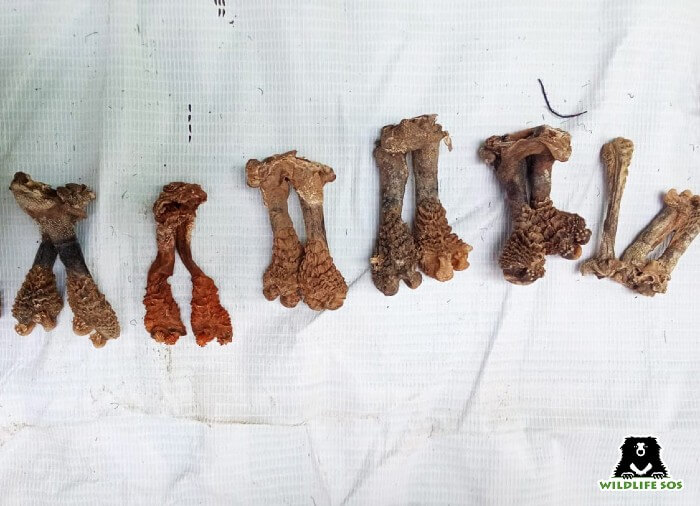
Last year, the Wildlife SOS-GSPCA team tracked the movement of a wildlife trade racket and discovered two locations in Jalgaon, Maharashtra which were storing wild species and body parts for trade. A raid conducted by the police, forest department and Wildlife SOS unearthed 3 dead Monitor lizards and 8 genitals of the animal.
Moreover, Wildlife SOS has also rescued a live monitor lizard from south Delhi’s INA market, meant to be sold for use in either traditional Chinese medicine or in soup preparations as an aphrodisiac. Our intelligence revealed that the traders could have possibly smuggled this lizard from the neighbouring state of Rajasthan.
Through these unrelenting and tenacious efforts, Wildlife SOS continues to work for the conservation of these imperiled reptiles. You can also make meaningful contributions by becoming a monthly donor and supporting our life-saving work.

